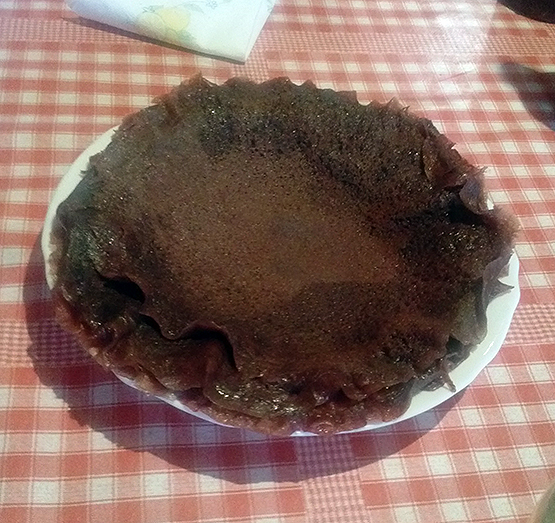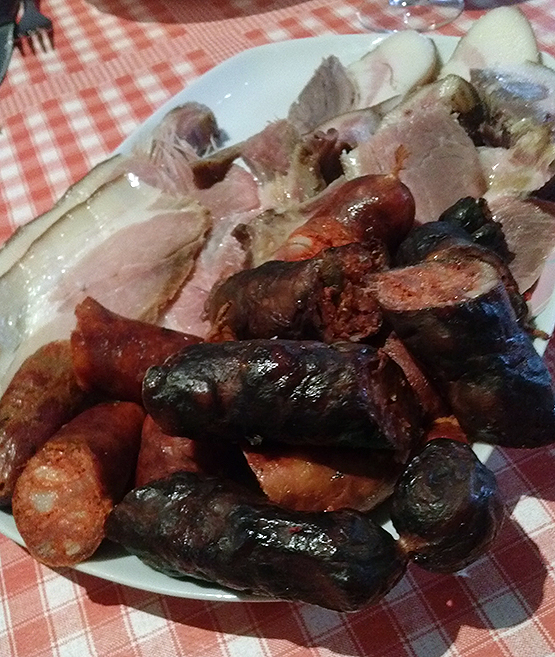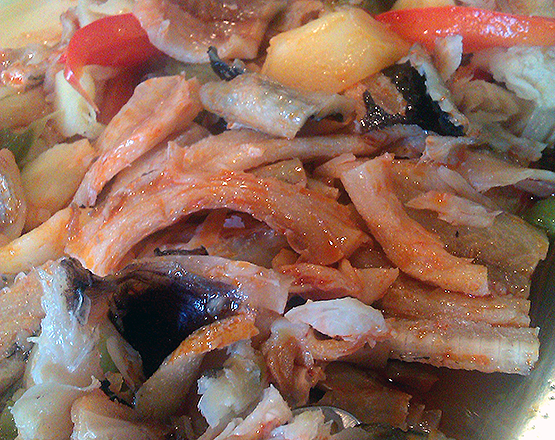From an outsider’s point of view, all gastronomic regions are reduced to a series of clichés that, although they may contain a grain of truth, do not come close to covering all of the variations of the area’s cooking. For visitors, the Andalucians are people who only eat ham, gazpacho and fried fish; the Castilians basically eat roasted lamb and suckling pig and the Galicians survive on boiled fish, pork shoulder with greens, and empanadas.
And yes, it’s true, amongst our dishes empanadas have a special spot, pork shoulder is eaten fairly frequently in winter and both the caldeiradas and fish prepared a la gallega could be crudely labeled as boiled fish. But Galician cooking, like any other, goes far beyond the clichés, integrating other products and reaching places that anyone from the outside could never even imagine. We could talk here about Galician mountain food with its roe deer, chestnut broths and wild boar sausage. Or we could allude to all of the potatoes and tortas that have practically disappeared today, and that for centuries were the daily sustenance for the majority of the population: puches, freces, papas de millo…
However, I would prefer to confront the clichés by talking about seven specialties you have surely never hear of, seven dishes from different regional kitchens that show us the least known of Spain’s northwestern cooking. Fish and shellfish, yes, but from a point of view that is far from the norm. And, above all, meat, tripe, offal and sausages that are, in some cases, very rare.
Chourizos de cabazo
Or with pumpkin. These belong to the family of sausages made from leftovers, those that, after the slaughter, use the seconds that were not used for the more noble chorizos. In some regions in the province of Ourense, like A Limia, Arnoia or la Terra de Celanova, the farce is that the chourizo is stuffed with squash, although there is a version found in other areas that uses onion. The result is a more tender and sweeter chorizo, darker, which soaks up the flavors of the broth it was cooked in. If you want to buy some good, artisanal chourizos de cabazo, you can do so on Saturday mornings in the Mercado da Biosfera de Allariz.
Androlla
Another eastern Galician sausage. This is the large intestine from a pig filled with bits of rib with meat and animal skins, which is smoked to then be eaten cooked, accompanied with vegetables (usually cabbage) and potatoes. Currently it is protected under a P.G.I. (Protected Geographic Indication) and is usually prepared in the Ourense mountains and in some parts of southern Lugo, although it has become easier to find in supermarkets throughout Galicia.
Caldo de ósos
This has nothing to do with plantigrades. This is a bone broth, just like it sounds. The most popular can be found in Taboada, where it has its own festival in the month of February. You can find it in restaurants throughout the winter, although it is a classic dish around slaughter time in many other areas. It is a garbanzo or faba bean stew, generally accompanied by potatoes and flavored with fresh pig backbone (soá), and, according to who is making it, can also contain ribs or trotters. It is normally finished with a sofrito, although in other places they prefer to use the spices used for callos a la gallega (Galician tripe stew).
Zapata
In some regions of the southern coast, like O Morrazo, between the Rías of Pontevedra and Vigo, or the estuary of the Miño River, you can still find zapatas. This is a fish, normally dogfish or something similar that is beheaded, cleaned and left to dry in the salty sea wind. To eat it, you rehydrate it, as if it were a cod, and grill it or prepare in a caldeirada. It’s a dish you can still find in some seaside taverns in Bueu, Cangas or the O Berbés neighborhood in Vigo.
Caldo de Riola
A Costa da Morte, in the northwest of O Coruña, was traditionally a poor and remote area. It is especially known for its fish and shellfish, but also has a rural area in which several traditional dishes have been preserved like this Caldo de Riola, an alubia bean stew with potatoes, flavored with pig heart and kidneys. Some people add diced lung. The dish, which almost disappeared, now has its own gastronomical festival in Ponte do Porto in the month of August.
Apupos
Again seafood, again a dish that has almost disappeared and is far from the clichés. The apupo is a giant snail, more than a hands-width in length, which was traditionally used to make horns that the fishermen used to call out to each other in the fog. The animal inside has somewhat leathery flesh, not very visually appetizing, but that once cooked, filleted and grilled, becomes a delicacy for those who live in some ports along the Costa da Morte and especially A Guarda in Pontevedra, where today you can find them on the menu of some taverns.
 Filloas de Sangre
Filloas de Sangre
A classic pastry made during slaughter time, although they are so popular that some people freeze the blood in order to prepare them throughout the year. The filloas are a type of crepe, a torta of flour, eggs and liquid that sets in a frying pan on an iron burner or hot stone. They are generally made with water, milk or broth, but making them with pig’s blood, which was the traditional way to prepare them in Galicia and is still done today, especially in some regions in the east, gives them a slight sweetness and a lightly metallic and very interesting flavor. However they are not to everyone’s liking, especially if you aren’t used to the taste.
Photo: Jorge Guitián







45 Comentarios